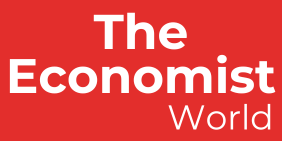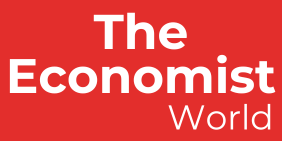
The local currency was trading at R18.62/$ by mid-morning, from R18.50 a day before – even as the dollar was weaker against most currencies. (KanawatTH/ Getty Images)
The rand weakened on Thursday morning after Treasury abandoned plans to increase value-added tax from May 1.
It had planned to raise VAT by 1 percentage point spread over two years as part of revenue measures for the 2025 national budget. Without the planned VAT increases over the next two years, estimated government revenue is now expected to fall short by around R75 billion over the medium term.
The ANC and the Democratic Alliance have been at odds over the proposal to raise VAT, and the DA’s role in the government of national unity remains under threat. On Thursday morning, the ANC is holding a press conference without the DA – but all the parties that assisted the ANC in passing the first fiscal framework through Parliament will be part of the event. This includes all the parties in the GNU, except the DA and the FF Plus, as well as Action SA, which cast the deciding votes.
The ANC and the DA are due to meet in Johannesburg at 11:00 on Thursday. The two parties have not met since their reconciliatory meeting 10 days ago, which saved the GNU from collapse after the Budget impasse.
The DA had challenged the planned tax hike in court and voted against the budget’s fiscal framework in parliament because of it.
On Thursday the DA celebrated the decision to backtrack on the VAT increase, but senior party official Helen Zille said its relations with the ANC were characterised by mistrust and the future of the coalition was still unclear.
Finance Minister Enoch Godongwana had argued in court papers that failure to raise the VAT would cause severe harm to state finances.
Some smaller political parties had put forward proposals that would include deeper expenditure cuts instead of a VAT hike.
The finance ministry said while some suggestions were worthwhile, they “would not provide an immediate avenue for further revenue in the short term to replace a VAT increase”.
The local currency was trading at R18.62/$ by mid-morning, from R18.50 a day before – even as the dollar was weaker against most currencies. The dollar surrendered some of the previous day’s big gains after US president Donald Trump backed down from threats to fire the head of the Federal Reserve and appeared to soften his stance on China.
Downside for the dollar
The dollar found some support this week when Treasury Secretary Scott Bessent said the US did not have a specific currency target in mind, ahead of talks with his Japanese counterpart. Bessent has also said the current de facto embargo on US-China trade was unsustainable, while cautioning that the US would not move first in lowering its levies of more than 100% on Chinese goods.
The dollar has recovered from a 3-1/2 year low of $1.1572 per euro, but was under pressure as trading in Europe gathered pace, with the single currency up 0.5% to $1.1368.
It is clear, by now, that no other currency is as sensitive to trade headlines as the dollar, said ING currency strategist Francesco Pesole in a note to clients.
“We still think the balance of risks remains skewed to the downside for the dollar in the near term, but we don’t expect a repetition of the one-way traffic in dollar selling we have witnessed of late,” he said.
“That said, EUR/USD remains almost entirely a function of USD moves. And another leg higher above $1.15 remains possible should fears about the Fed’s independence take centre stage again.”
Investors were rattled over the past few days when Trump made a series of verbal attacks on Fed Chair Jerome Powell over his reluctance to cut interest rates until the data justified such a move.
Such has been the investor pullback from the dollar that it is currently on course for its worst start to the year against a basket of currencies since the 1970s, according to LSEG data.
The apparent openness from the Trump administration to negotiation on tariffs, together with a little more confidence in the independence of the Fed, has given investors a foothold to buy U.S. assets.
Yet Jan Hatzuis, who is chief economist at Goldman Sachs, believes the dollar has a lot further to fall.
“A decision by non-U.S. investors to reduce their U.S. exposure would thus almost certainly result in significant dollar depreciation,” Hatzuis wrote in the Financial Times on Thursday.
“In fact, even reluctance by non-U.S. investors to add to their U.S. portfolios will probably weigh on the dollar,” he said.
The Swiss franc, which is around its strongest against the dollar in more than a decade thanks to hefty safe-haven flows this month, rose, leaving the U.S. currency down 0.5% on the day at 0.8268 francs.
The yen also firmed, leaving the dollar down 0.6% at 142.68, while sterling rose 0.3% to $1.3288.
China’s yuan was a touch weaker at 7.2974 per dollar.
In crypto markets, bitcoin had followed U.S. stocks and run higher even against a rebounding dollar. By Thursday, it had run out of some steam, easing 1.2% on the day to $92,526. Meanwhile, Trump’s meme coin surged 33% overnight after the online promotion of a gala dinner with the president for the top 220 buyers of the $TRUMP coin.
Additional reporting by News24


